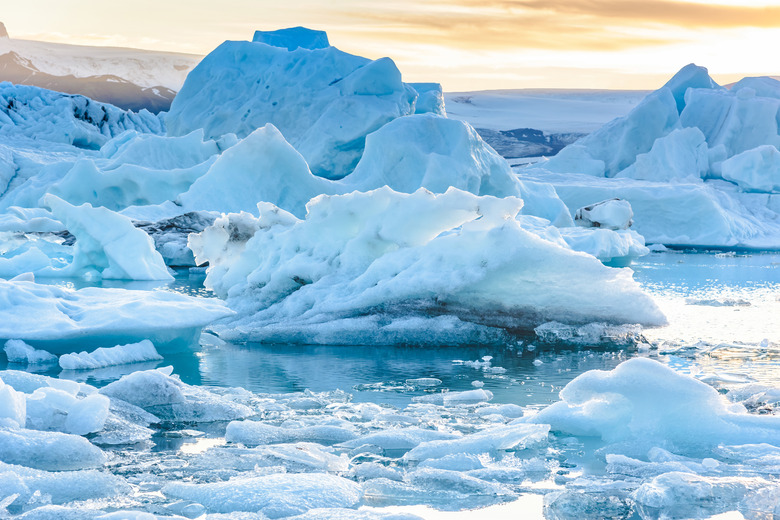What Effect Does Geography Have On Climate?
Climate is the prevailing patterns of temperature and precipitation across a region. A region's climate can be tropical or frigid, rainy or arid, temperate or monsoonal. Geography, or location, is one of the major determining factors in climate across the globe. Geography itself can be divided into components including distance from the equator, elevation above sea level, distance from water and topography, or the relief of the landscape.
Higher Latitudes Have Cooler Climates
Higher Latitudes Have Cooler Climates
Latitude is a measure of distance from the equator. Locations between the Tropic of Cancer and the Tropic of Capricorn, between 23 degrees north and 23 degrees south latitude, are considered tropical. As you move away from the equator, climates shift incrementally through subtropical, temperate, subarctic and, finally, arctic at the poles. The tilt of the Earth on its axis means that the further you get from the equator, the longer the area spends tilted away from the sun each year, and the cooler and more seasonal the climate.
Water Bodies Regulate Precipitation and Moderate Climate
Water Bodies Regulate Precipitation and Moderate Climate
Over 70 percent of the Earth's surface is covered in water, so it makes sense that water bodies influence climate. Oceans and lakes are very good at storing the heat that is created when the sun's energy is absorbed by the water. The water heats and adds moisture to the air above it, a process that drives the major air currents around the world. Water bodies also make the climate of adjacent land masses more moderate. They absorb extra heat during warm periods and release it during cooler periods. Warm, moist ocean air drives precipitation patterns around the world when it falls as precipitation as it is carried over cooler land masses.
Mountains Disrupt Air Flow
Mountains Disrupt Air Flow
Mountain ranges are barriers to the smooth movement of air currents across continents. When an air mass encounters mountains, it is slowed and cooled because the air is forced up into cooler parts of the atmosphere in order to move over the obstruction. The cooled air can no longer hold as much moisture and releases it as precipitation on the mountain range. Once the air is over the mountain, it no longer has much moisture, and the leeward side of mountain ranges is drier than the windward side.
Higher Elevations Have Cooler Climates
Higher Elevations Have Cooler Climates
Climates become cooler and the cold season lasts longer as elevation above sea level rises. This holds true for mountains and high-elevation plateaus, such as the steppes of Mongolia. Every 1.61 kilometers (1 mile) in elevation gain is roughly equivalent to moving 1,290 kilometers (800 miles) further from the equator. Mechanistically, higher elevations have lower air pressure, fewer atoms per unit of air to excite and, thus, cooler temperatures. Mountains frequently receive more precipitation than the surrounding lowlands, but many high-altitude plains are deserts because of their location on the leeward side of a mountain range or continental mass.
Cite This Article
MLA
Becker, Andrea. "What Effect Does Geography Have On Climate?" sciencing.com, https://www.sciencing.com/effect-geography-climate-9860/. 9 March 2018.
APA
Becker, Andrea. (2018, March 9). What Effect Does Geography Have On Climate?. sciencing.com. Retrieved from https://www.sciencing.com/effect-geography-climate-9860/
Chicago
Becker, Andrea. What Effect Does Geography Have On Climate? last modified August 30, 2022. https://www.sciencing.com/effect-geography-climate-9860/
